How to Choose a Subwoofer for Your Car – Buying Guide
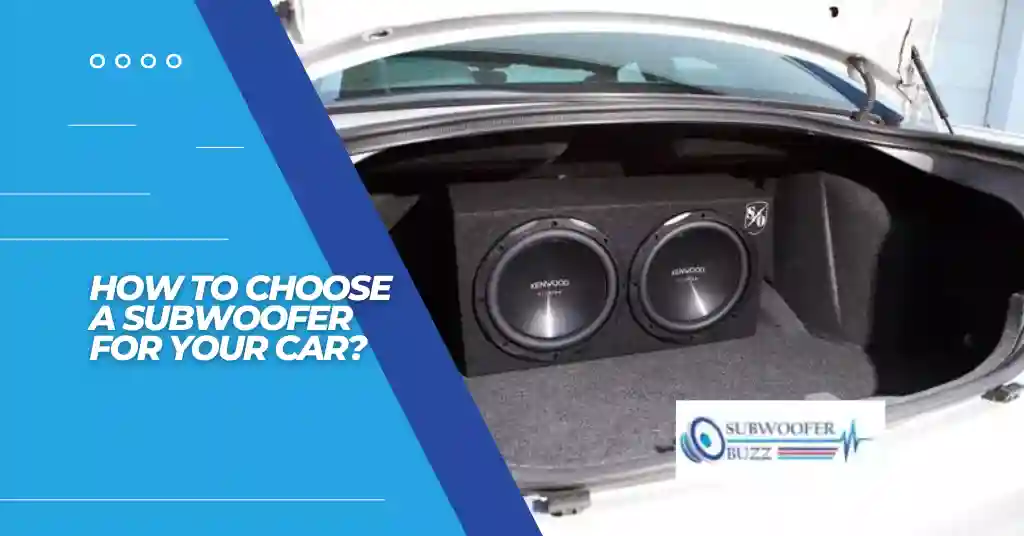
Are you new to the car stereo world? It doesn’t matter! We all make mistakes while choosing the right subwoofer for the car. However, a subwoofer can positively impact your car music experience if picked right.
Car Subwoofers are well-known for their deep basses; you can feel the thumping effects from a distance. Moreover, a subwoofer can make your traveling experience even better.
Although, it’s hard to find the subwoofer for your car as a beginner. But worry not. Here I am to provide you with the most efficient tips to decide what subwoofer you should get for your vehicle.
Let’s dive in!
13 Steps to Consider Before Choosing a Subwoofer for Your Vehicle:
These thirteen steps will help you prevent mistakes made by most beginners (sometimes pros, too).
1. Picking a Subwoofer Type:
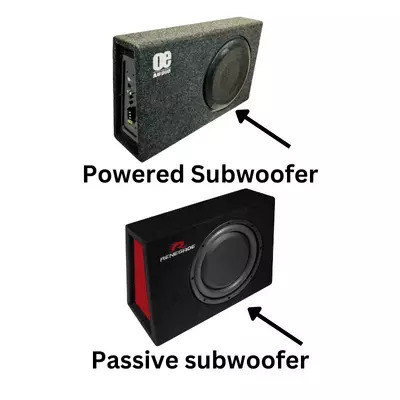
The first and foremost thing you must consider is choosing a subwoofer type. There are two types of subwoofers Active or Powered Subwoofers and Passive Subwoofers.
Active: This type of subwoofer has a built-in amplifier (which means you don’t need to spend any dollars on buying an external amplifier). This type will work well for you if you’re just more than an average bass lover.
Active subwoofers are often less expensive and easy to install since they require no additional wiring or components. They also need less power than their passive counterparts, as the amplifier is built-in. However, active subwoofers usually provide less bass than passive subwoofers, and they are limited in terms of customization options.
Passive: This type of subwoofer needs an external amplifier to work smoothly. However, the passive sub provides a deep bass. If you are a die-hard bass lover like me, consider installing this subwoofer.
Passive subwoofers require additional components such as amplifiers and crossovers. This can add to the cost but also allow for more customization options. Passive subwoofers are often more potent than active ones, providing deeper frequency tones.
2. Know Your Budget:
As discussed above, installing a subwoofer in your car can be a great way to improve the sound quality of your vehicle, but it’s essential to make sure you know your budget before beginning the project. After all, many types and sizes of subwoofers are available on the market, each with its own associated cost.
Knowing how much money you have to spend will help you narrow your choices down, so you can choose the suitable subwoofer for your car without breaking the bank. It will also allow you to plan the budget for any other accessories or components needed to complete the installation process.
3. Decide whether to Customizing Your Subwoofer or Get a Pre-built Sub:
This is the most tricky part, where beginners and pros need clarification. If you are totally new to the car stereo, I recommend you go with a pre-built setup rather than customization. Also, it can determine the overall audio quality and experience you have while listening to music in your car.
Customizing your own subwoofer gives you more control over the exact specifications of your car sound system. For example, you can choose the size, type, and number of subs that best match your needs and preferences.
You can also customize other components, such as amplifiers and enclosures, to ensure optimal performance for your subwoofer setup. Customizing a subwoofer also saves money by purchasing only the needed parts rather than paying for a pre-built package.
On the other hand, buying a pre-built subwoofer will cost more but can be worth it if you want a quick and easy installation process. You’ll get all of the necessary components in pre-built car subwoofers already put together, so you don’t have to worry about matching up the right pieces or making sure they fit.
Furthermore, pre-built subwoofers generally come with warranties, giving you peace of mind in case of any potential issues.
4. Choose a Right Sized Subwoofer:
Selecting the right size subwoofer for your car will determine how much power the speaker can handle and how low frequencies are projected. The size of the subwoofer also affects audio quality, as smaller subwoofers can only partially reproduce low-frequency bass notes due to a lack of acoustic power.
Larger subwoofers can produce more profound and more accurate frequency notes, which is particularly important for musical genres such as rap or hip-hop. However, you can click on the link above to find the right-sized sub for your vehicle.
5. Consider Power Handling as Well as Sensitivity:
This is also an essential step to understand. When it comes to installing a car audio system, power handling and sensitivity are two important factors to consider.
Power handling is the amount of power (measured in watts) that an audio component can safely handle without damage. Sensitivity measures how well a speaker will convert input energy into sound output. Higher-sensitivity speakers require less power to produce the same output than lower-sensitivity speakers.
A speaker with too low of a power handling can lead to damage due to the amplifier having to work harder and give off more power. On the other hand, having a speaker that is too sensitive can cause distortion and poor audio quality if not paired with an appropriate amplifier.
6. Impedance:
Another most important step to consider is determining the impedance level (1) of a car subwoofer. If you install a subwoofer with too high an impedance, the amplifier will not be able to power it correctly, leading to poor sound quality.
The amplifier may be overpowered and damaged if the impedance is too low. By determining the impedance rating of your subwoofer before it is installed, you can ensure that your car sound system will perform at its best.
Additionally, knowing your subwoofer’s impedance rating (also RMS power ratings) will help you choose an amplifier with the correct input power. This will ensure you get the most out of your sound system and avoid any damage caused by incorrect power levels.
7. Enclosure Design:
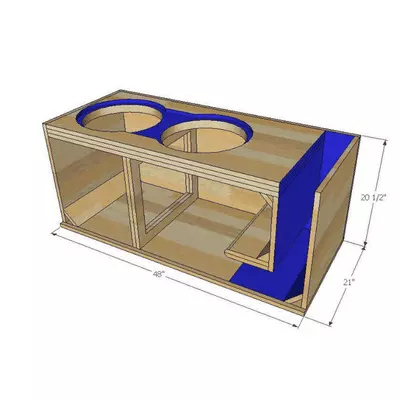
Some people believe enclosure design is not necessary to get a perfect sound. Well! They’re wrong. Enclosure design plays a vital role in your subwoofer’s performance and can significantly impact your car stereo system.
The enclosure size, shape, and material used to build it all affect how the subwoofer performs. It is essential to select an enclosure that will provide optimum performance for your specific setup.
A well-designed enclosure can provide a greater sound pressure level (SPL), lower distortion, and more efficient power usage. It is also essential to consider the type of music you will be listening to when selecting an enclosure for your subwoofer so that it can handle the kind of bass frequencies you want to achieve.
A good quality, adequately designed section can help increase the overall sound quality of your car’s audio system. Sealed & Ported are two types of the subwoofer enclosure.
8. Determine the Sub’s Position:
You may be wondering why you should pay attention to your subwoofer’s placement. That’s not a big deal! The position of your subwoofer can significantly impact the overall sound quality of your car’s audio system.
To get the best sound possible, it is essential to determine the correct placement for your subwoofer before installing it.
The subwoofer’s location in relation to other components, such as speakers, amplifiers, and woofers, should be considered when determining the optimal placement for your subwoofer.
If you place the subwoofer in an incorrect position, it will not perform as designed and can cause distortion in the sound. Also, if you decide to put your subwoofer in your car trunk, it is necessary to choose the right way to face your subwoofer in the car.
9. Available Space in Car:
One of the most important steps before beginning any installation process is determining available space in the car. Knowing the exact size and shape of the area, you plan to work with will make it much easier to choose the correct subwoofer for your needs and ensure that you have the necessary supplies and tools.
The size of the car is an essential factor when determining available space in your vehicle. If you plan to position a new subwoofer in a large SUV or sedan, you will likely have plenty of space to work with. On the other hand, if you are installing a subwoofer in a smaller vehicle, such as a hatchback or compact car, consider creative solutions to make the most of the limited space.
Also, you can go for subwoofer tubes or underseat subs if you have limited space in your car.
10. No. Of Voice Coils:
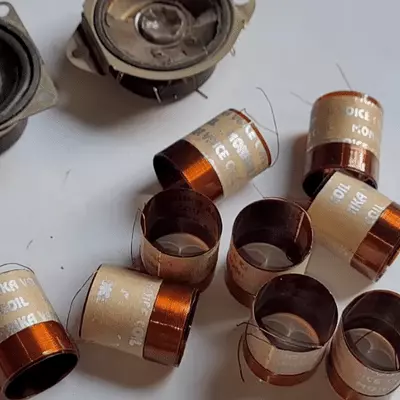
This option is for car audio enthusiasts who are on another level in terms of bass love. A single voice coil is an essential part of any loudspeaker; it provides the electrical connection between the amplifier and the moving parts of the speaker–the cone and surround.
Having dual voice coils gives you greater flexibility to shape the bass response of your sub, allowing for precise fine-tuning and higher power handling.
Dual voice coil also helps to improve the overall music quality, giving you a more prosperous and fuller sound when playing music at high volumes. Knowing how many voice coils are in your subwoofer will help ensure that you get the best performance possible out of your system.
11. Single or Dual Magnet Subwoofer:
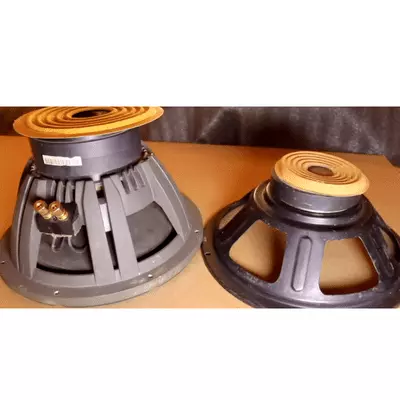
A dual magnet subwoofer offers a much higher total performance than a single magnet. It provides increased power handling, improved sound quality, and a more profound bass response.
In addition, it can output more power compared to a single magnet subwoofer. This can result in a louder, clearer sound overall. Furthermore, due to its extended low-end frequency response, it can reproduce bass at much lower frequencies.
This translates to a fuller sound with more impactful bass notes. With its high power handling capabilities and extended low-end response, the dual magnet subwoofer gives you the best performance for your car audio system.
12. Frequency Range:
As we already know, a subwoofer is a crucial part of any car audio system as it plays low-frequency sounds that can genuinely enhance your music-listening experience.
However, if you install a subwoofer with an incorrect frequency range in your car, you may end up with poor sound quality and an unsatisfactory listening experience.
That’s why it is essential to determine the frequency range of a subwoofer before you choose it for your car. You can specify the frequency range of the car’s sub by its size, design, and power handling capabilities.
The larger the subwoofer, the lower the frequencies it can produce – some high-end subwoofers can even go as low as 20Hz. On the other hand, smaller subwoofers are limited to frequencies around 50-70Hz.
13. Read Reviews for Your Desired Car Subwoofer Model:
Reading reviews can provide valuable insights into the quality of a product, and it is something you should do when buying a subwoofer for your car.
Reviews can tell you about a specific model’s quality, power handling, and bass response. It’s also essential to learn what other users think of the product. In addition, reading reviews can provide insight into how well the subwoofer works in different types of cars.
Some subwoofers are better suited for certain types of vehicles than others, so reading customer reviews is a great way to get an idea of whether a model will fit your car and sound good in it or not. You can also learn about the installation and setup process, which is a challenge for some models.
Some Key Features:
There are some key features of choosing a subwoofer for your car:
Improved Sound Quality: With their powerful bass, subwoofers can fill in the low-frequency gaps in a vehicle’s audio system, providing more depth and clarity. Adding a subwoofer to your car can also create an enhanced listening experience by giving a fuller sound and more vibrant bass.
Reduced Outside Noise: Since subwoofers can generate lower frequencies than traditional car speakers, they are better equipped to minimize outside noises of any pitch. Adding a subwoofer effectively reduces noise inside the car and makes your car ride much more peaceful and enjoyable.
Enrich Your Listening Experience: Adding a subwoofer to your car stereo will help you bring out the bass and other lower frequencies in your music that you wouldn’t be able to hear otherwise. It will also add more depth and texture to songs that lack it. Subwoofers are great for playing genres like hip-hop and EDM that require more bass to be appreciated truly.
General FAQs
How Do I Know What Sub to Get for My Car?
The first step in finding the right subwoofer for your car is determining what sound you want. Do you prefer loud and booming bass or something a bit more subtle?
Once you have an idea of the sound you’d like to produce, consider the size of your vehicle’s cabin – larger cars will require more giant subs to achieve the desired sound. Additionally, consider the power requirements of your car subwoofer.
Lastly, think about how much space you have in your car – different subs are designed for specific locations and may require custom mounting solutions if there needs to be more room for a standard installation.
How Powerful a Subwoofer Do I Need for a Car?
The power of the subwoofer you need for a car depends largely on your preferences and the size and shape of your vehicle. Generally, you should select a subwoofer with an RMS (Root Mean Square) wattage within 25% to 50% of your amplifier’s total wattage output.
In addition, you should also consider the subwoofer’s size. For most vehicles, 8 to 10 inches is a good choice since it allows for adequate bass production without taking up too much space in the cabin. Car audio systems with multiple subs should opt for smaller models (6 to 8 inches).
What Size Sub Is Good for a Car?
The size of the subwoofer you should get for your car depends largely on a few factors:
1. The type and size of the vehicle you have.
2. You also need to consider the kind of music you plan to listen to and how loud you intend to play it.
3. Consider your budget.
Car subwoofers come in a wide range of prices, from very affordable to quite expensive.
External Sources
(1) Impedance
